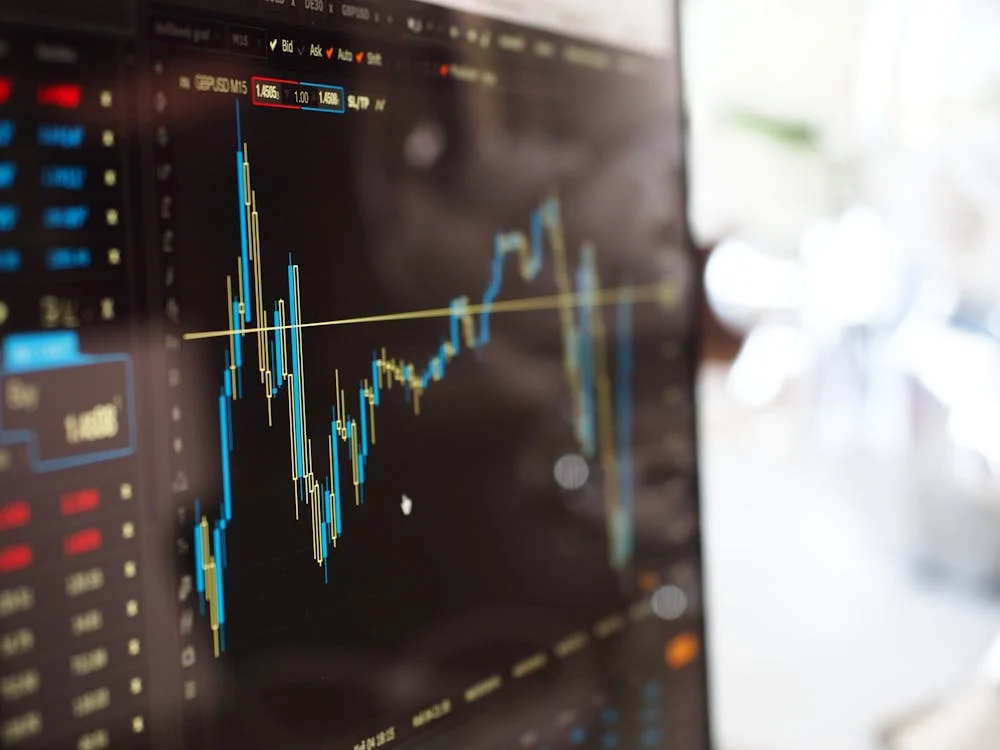“Good investors gather information, put that information into current and historical context, then make sound decisions.”

At the end of March, the S&P 500 Index had just experienced a moderate correction of -10% from the February all-time high, and had bounced not once, but twice. The big question was if that correction had run it’s course or if it would continue lower into a severe correction. We only had to wait until April 3rd for the answer. In only 3 days the S&P 500 Index closed down another -10%. This was a total of -19.39% from the February high, dangerously close to Bear Market territory, and most definitely in severe correction territory. And now we are reminded of what a severe correction feels like. The S&P 500 Index is down -5.68% YTD.
April’s volatility was extreme, but still nowhere close to the volatility seen five years ago during the COVID correction. In 2020, the S&P 500 Index dropped -35% in five weeks, only to rally +45% in just six weeks. One could say that COVID was an extreme time, giving way to extreme measures. Just as some say that tariffs have put us into an extreme time, giving way to extreme measures. These two corrections have two more things in common. Both corrections were triggered by unique actions taken by the U.S. executive branch. Both corrections started mid-February with the S&P 500 at all-time highs.
From the intraday low on April 7th, the S&P 500 Index rallied over 13% in two days before heading lower to bounce a second time. One of the most important lessons we have hopefully learned from the past few years in that extreme sell-offs are frequently followed by extreme rallies. These ‘V-shaped’ rallies have become the rule rather than the exception. That being said, this market is still within a severe correction, and still perfectly capable of experiencing a Bear Market, like it did in 2022. With markets currently at a midpoint between a full recovery and a Bear Market, both offensive and defensive opportunities can develop.
International equity markets did not escape the April decline, but do get credit for making a full recovery. The MSCI EAFE Index fell -15% in three weeks, but since rallied +17% in three weeks. These numbers are matched by the MSCI Europe Index. This puts developed international equities clearly in the lead for the year. The MSCI EAFE is up +9.89% YTD, with the MSCI Europe Index up +13.74% YTD. Emerging market equities were not having as robust a year as developed international equities, but shared the initial decline. The MSCI Emerging Markets Index did not share the full recovery, rallying +13% from the correction low, and up +2.75% YTD.
The recent correction was so sharp and so broad that it also negatively impacted bond markets, though to a lesser degree. The Bloomberg U.S. Aggregate Bond Index fell -4% that same week before rallying +3%. It is now up +2.68% YTD. Other U.S. bond indexes are mixed, with the Bloomberg Municipal Bond Index down -1.62% YTD, and the Bloomberg U.S. High Yield Index +1.11% YTD. Inflationary pressures have abated to a degree but persist. Now we have additional pressures from a falling U.S. Dollar and potential tariff impacts. Bonds continue to perform their ‘shock absorbing duties’ in diversified portfolios.
Corrections of any flavor are an integral part of investing. They provide opportunities to reevaluate portfolios, looking for relative weakness as well as relative strength. They can also open tax-loss harvesting opportunities and offer opportunities to purchase securities at reduced prices for those nimble enough to take advantage. We have recently initiatedboth of these actions for non-qualified portfolios, and have been adding to positions in qualified, tax-deferred portfolios. Severe corrections are the most rare, and do have the potential to decline further into a Bear Market. Their extreme volatility can also create rare opportunities.
Edward D. Foy, Manager, SELECTOR® Money Management, Chief Investment Officer, Foy Financial Services, Inc.
© 2025 Edward D. Foy. ed@foyfinancial.com, www.foyfinancial.com.
Sources: StockCharts, Morningstar, Stock Trader’s Almanac.